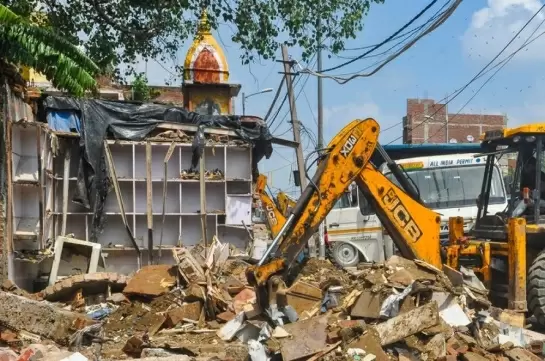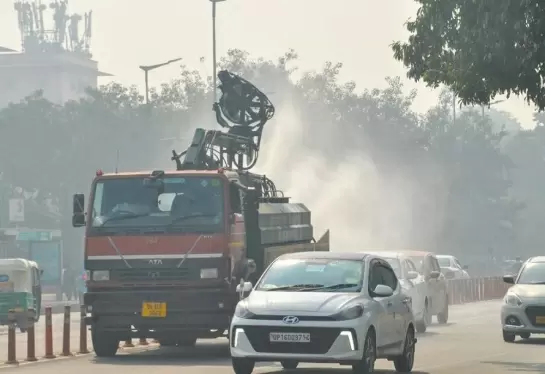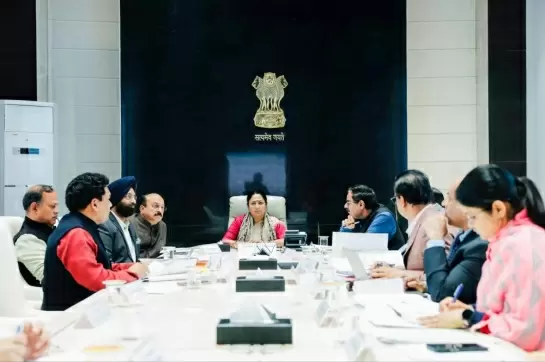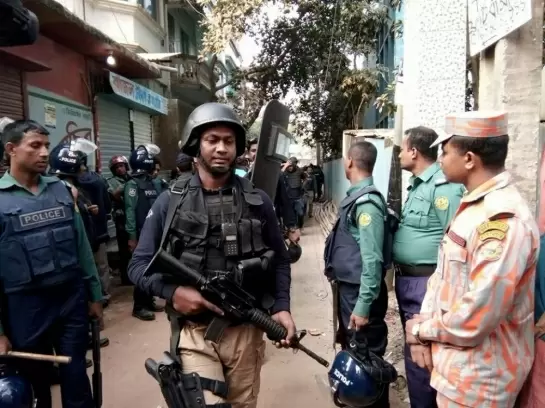Kolkata’s iconic Writer’s Building gets ready for a facelift
04-October-2014
Vol 5 | Issue 40
Restoring Victorian-era layers shrouded by paint and cement to bring out the imposing architecture of the 230-year-old Writers' Buildings, the permanent seat of the West Bengal government, is among the measures suggested by an Australian heritage expert who has been consulted for the grand structure's landmark renovation.
"What struck me on seeing it the first time was the red paint," said Roger Beeston, deputy chair, AusHeritage (Australia's international network for cultural heritage).
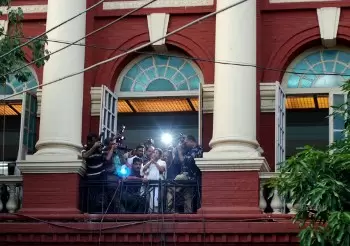 |
|
West Bengal Chief Minister Mamata Banerjee greeting the people from the corridors of Writers' Building in 2011 (File Photo: Indian Photo Agency)
|
He was here earlier this month to provide his inputs at a workshop signalling the start of the mammoth task.
"Unfortunately, we have had these layers of paint and cement rendered over these red bricks. The idea is to explore if we can remove these later layers and restore the natural brick of the Victorian era," Beeston said on the sidelines of the workshop at Jadavpur University.
The facelift of the red colonial edifice, built around 1780, is part of Chief Minister Mamata Banerjee's "London dreams" - her grandiose idea of sprucing up the eastern metropolis on the lines of the British capital.
A silent witness to India's and Bengal's history, the neo-classical architectural icon, at the city's bustling Dalhousie intersection, with its trademark colour and majestic Corinthian columns, was the first three-storied building in Kolkata (then known as Calcutta).
It will now see another epoch-making event unfold with the renovation project that is meant to transform it into a functional, green building. On board for the project are experts from Indian National Trust for Art and Cultural Heritage (INTACH) and Jadavpur University's Department of Architecture.
Ringed by other colonial buildings and a sea of humanity that comes to life every morning, Writers' is holding its own despite the ravages of time. Experts concur that after restoration, the edifice should also look "interesting" to the public.
Designed by Thomas Lyon, Writers' was constructed on behalf of Richard Barwell, a council member during Warren Hastings' tenure as governor general. The property remained in private hands till 1854 when the East India Company bought it and housed its junior employees or "writers" in the buildings.
By 1906, Writers' had acquired its characteristic Greco-Roman look in elevation (a rather subtle look compared to the Gothic style) complete with a portico in the central bay and the red surface of the exposed brick.
"Another suggestion would be putting slate back on the Mansard roofs, the four-sided sloping French roofs. All slate has been lost and we have quite ugly asphalt and bituminous layers," Beeston said.
To retain its grandiosity, Beeston said the colourful and patterned Minton floor tiles of the Victorian period should be preserved, all the while allowing for the introduction of smart and modern services fire services like sensors, air-conditioning, water sprinklers and modern conveniences.
"Designated service areas for all these systems are also what we are exploring. The entire system should be energy efficient and sustainable, given the staggering number of people who will work here. It should engage the public through its architectural finesse and smart features," said Beeston.
Prior to the temporary shifting of the Bengal secretariat from Writers' last year to its present location in Nabanna, the mini-township of sorts (with a built-up area of around 550,000 square feet) the structure housed 34 departments and other offices, with aproximately 6,000 employees.
Almost rectangular, the gigantic edifice has a main linear block, including the rotunda, and five other primary blocks that are heritage structures. Between 1945 and 1947, four new blocks were added connecting the main ones. Finally, post-Independence, another set of four blocks were constructed in the area ensconced by the earlier buildings.
Leading the project is Madhumita Roy, head of the Jadavpur University's Department of Architecture, and her team of students.
She said a part of the plan is to demolish post-Independence era structures that have cramped up the interiors and obstructed ventilation.
"While we will incorporate energy-efficient technologies like water harvesting and solar panels, we will also go for passive architectural interventions to ensure ample light and air enters so that it is truly a green building. It will be a smart building with energy conservation technologies.
"We are right now documenting and analysing the existing features and what we can add," said Roy.
State convenor of INTACH G.M. Kapur iterated that all possible precautions will be taken to maintain the structure for posterity while ensuring the final product is "an organic and living" space suited to the times.
"What we are looking at is a landmark restoration project in the country," said Kapur. - IANS










